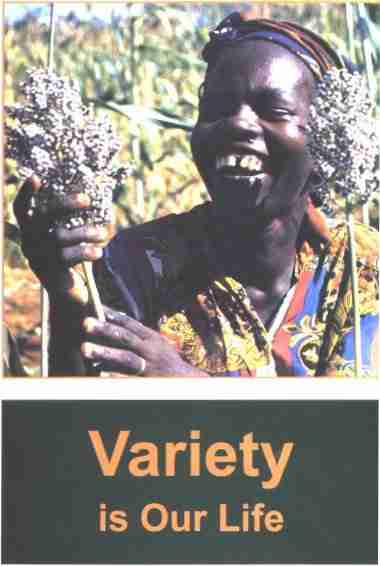Defending
Agricultural Biodiversity
Presentation by Patrick Mulvany, ITDG Return to top
The COP has one of its most important tasks on Friday 19th May 2000. It has
to decide about how to develop its work on Agricultural Biodiversity. The Draft
Decision text is deficient in various details, mainly that it does not stress
sufficiently the need for a farmer-centred programme. Agricultural
biodiversity is central to both environment and development.
- Agriculture is the largest user of biodiversity
- Farmers are the main ecosystem managers
- Agricultural biodiversity provides:
- sustainable production of food,
- biological support to production, and
- ecosystem services
The Agricultural Biodiversity Programme of Work must be farmer-centred if it
is to be effective. It must stress and promote:
- Farmers’ guardian role in conservation and sustainable use
- Empowerment of farmers
- Counteracting the spread of unsustainable agriculture and use of
unsustainable and potentially unsafe technologies - especially GURTs
- Farmer-driven research and development
The CBD must actively collaborate with farming communities and their
institutions as principal partners.
Specific textual changes have been proposed by NGOs in the
GBF15 report, covering the need for additional clauses in each of the four
elements of the proposed programme of work, each addressing the need for
farmer-centred approaches and practices. There is a need to ensure that reports
to COP 6 cover work on all these elements and demonstrate the way in which the
Convention is really reflecting the demands, aspirations and needs of farmers
and reporting that meaningful incentives are being provided to them to enable
them to continue their role in managing agricultural biodiversity on which
universal food security depends.
Many specific details are included in the landmark Decision III/11 on
Agricultural Biodiversity that cover not only the Programme of Work but also, a
description of the problems and possibilities of different agricultural systems
and the need to mitigate the negative impacts of industrial agriculture on
agricultural biodiversity, the relationship with WTO, and encouragement to the
FAO to complete the negotiations on the International Undertaking.
The International Undertaking (IU) is being renegotiated by
countries through the FAO Commission on Genetic Resources for Food and
Agriculture. But, given the distinctive nature, origin and problems of PGRFA
and the farmers’ knowledge embodied in these, the IU will need to provide
a framework which simultaneously permits free access and exchange, through a
multilateral system of access to the resources, provide benefits related to end
use i.e. food security and implement internationally recognised Farmers’
Rights.
The COP Decision should ensure a pro-farmer IU is submitted to the next
COP as a legally binding instrument.
This COP should ensure that its decisions relating to Agricultural
Biodiversity in other areas are consistent and coherent and linked through
specific references in the Decision on Agricultural Biodiversity.
The CBD has a real challenge before it. How can it support farmers’
efforts to Sustain Life on Earth: to maintain the functions and
integrity of Agro-ecosystems through the sustainable use of agricultural
biodiversity? A good Decision on Agricultural Biodiversity that loses none of
the gains made in previous Decisions and adds a farmer-centred focus to the
CBD’s work, will be a good step forward.
Return to
top
SHINGAIRAI
MAPUNDU, Zimbabwean farmer
Return to
top
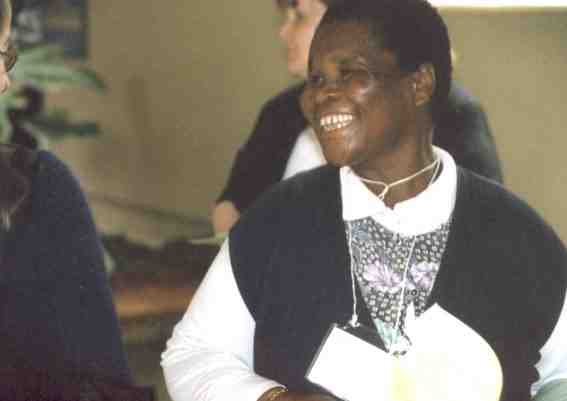
Shingairai Mapundu speaks out against Terminator Technologies
"We understand that we might get seeds which have been changed so
that we won't be able to plant them again. We want to make sure this does not
happen. We want to make sure that our seeds will be able to grow for the next
harvest. I have seen developments with chemicals like this before that have
gone wrong and I do not trust them."
Return to
top
LUCY MATHENGE,
ITDG researcher on agricultural biodiversity conservation
Return to
top
STRATEGIES FOR ON FARM AGRICULTURAL BIODIVERSITY CONSERVATION BY THARAKA
COMMUNITY, KENYA: key points from presentation to lunch time briefing
Summary
- Cultivated crops are taken as the most important diversity
- Farmer's greatest need is to have access to more varieties but not to
replace existing varieties
- It is difficult for complete seed loss to take place
- Diversity for cultivated crops and farming systems has increased over time
while most other types of diversity have decreased-pasture land, wild plants
and animals etc Strategies
- Selecting seed in shamba before crop harvest to secure high quality seed
and planting them early
- Keeping enough seed to last for over 3 years
- Protecting and caring for useful wild plants from burning when opening up
new land and in slash and burn system
- Seed bulking of all seed at hand
- Plowing and adding mulch/manure to fertilize soils
- Giving seed to neighbours for preservation
- Mixed seed and intercropping to be sure of a crop harvest-good soils
- Planting seed during harvesting-good soils
- Planting two seasonal crop for mulch-medium soils
- Planting when the rain set-poor soils
- Farmers' knowledge of sustainable use of diversity in dry land ecosystems
needs to be fully supported at national, regional and international level
Return to
top
ENCOURAGING
DIVERSITY: BOOK LAUNCHES
Return to
top
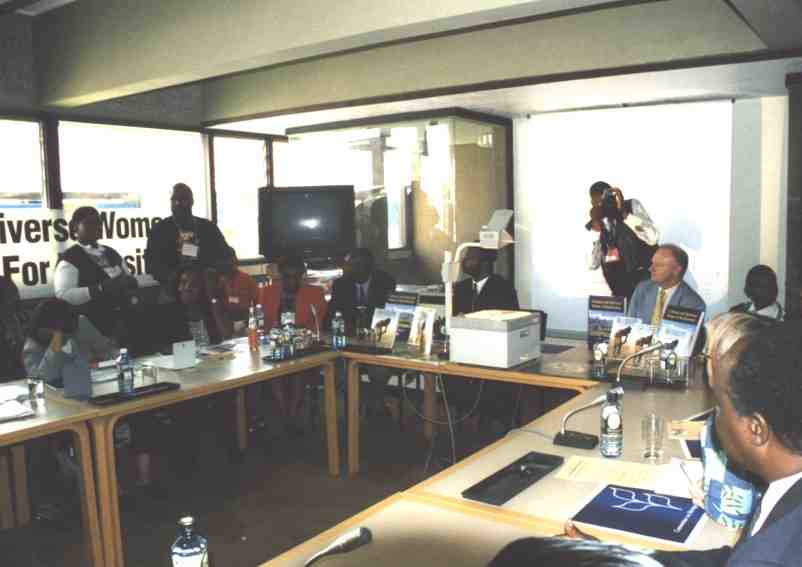
Book launch in room 8 UNEP, 18 May 2000
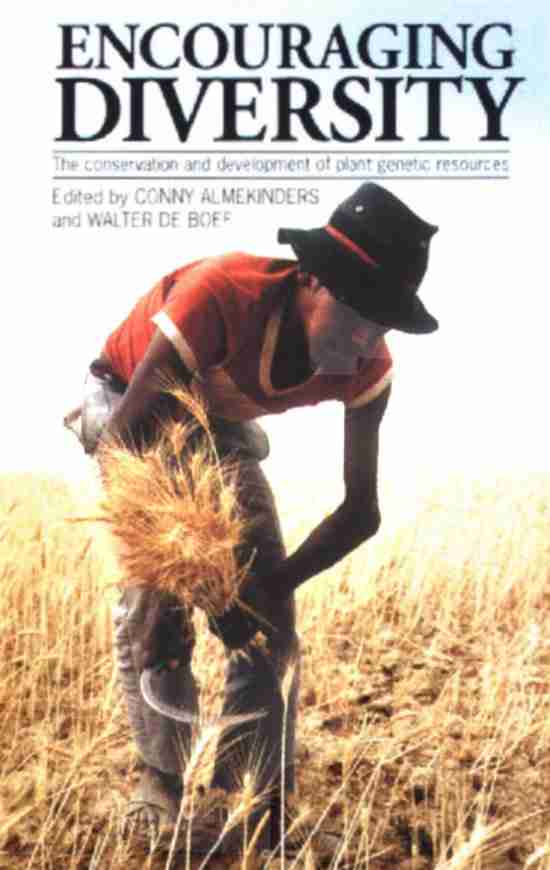
Encouraging Diversity: the conservation and development of planr genetic
resources. Conny Almekinders and Walter de Boef (eds). IT Publications
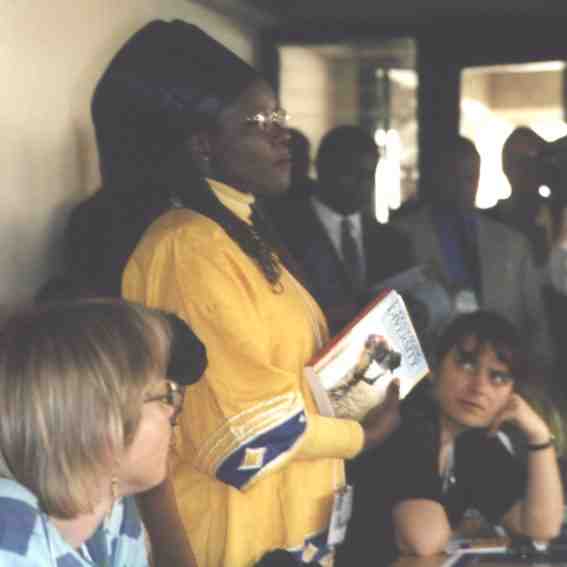
Monica Opole, CIKSAP, launches Encouraging Diversity
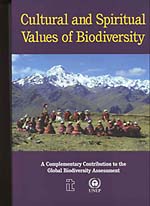
Cultural and Spiritual
Values of Biodiversity. Darrell Posey. IT Publications / UNEP
Link to UNEP pages announcing Cultural and Spiritual Values of
Biodiversityhttp://www.unep.org/Biodiversity/
Speakers included Klaus Topfer, UNEP Executive Secretary; Mark Chakrabarty,
UNEP Task Management; Ruth Liloqula, Soloman Islands delegate and contributor
to the volume on cultural values; and Mark Collins, Director of UNEP-WCMC.
Cultural and Spiritual Values of Biodiversity: A Complementary Contribution
to the Global Biodiversity Assessment, edited by Darrell A. Posey, was launched
by UNEP and Intermediate Technology Publications.
Weaving together philosophical, historical, legal, scientific and personal
viewpoints, this book gives a rich sample of the vast web which makes up our
cultural, spiritual and social diversity. The volume highlights the key role of
cultural and spiritual values in the appreciation and preservation of all life,
arguing that these values give us a true reflection of worth.
The volume also directly addresses two CBD Articles: Art.8(j) on the
respect, preservation and maintenance of the knowledge, innovations and
practices of indigenous and local communities embodying traditional lifestyles
relevant for in situ conservation and sustainable use of biological diversity;
and Art.15 on access to genetic resources and national authority.
Chapters cover topics such as the complex issue of indigenous people,
holistic health practices where environment and diet are integrated into
indigenous and medical health systems, and the importance of effective
intellectual property rights and territorial and land rights to enhance and
maintain local control. For a copy, contact Intermediate
Technology Publications.
Link to ENB pages covering 23 May launch by UNEP of Cultural and Spiritual
Values of Biodiversityhttp://www.iisd.ca/biodiv/cop5/23may.html
Return to
top
GROUND UP:
PELUM JOURNAL
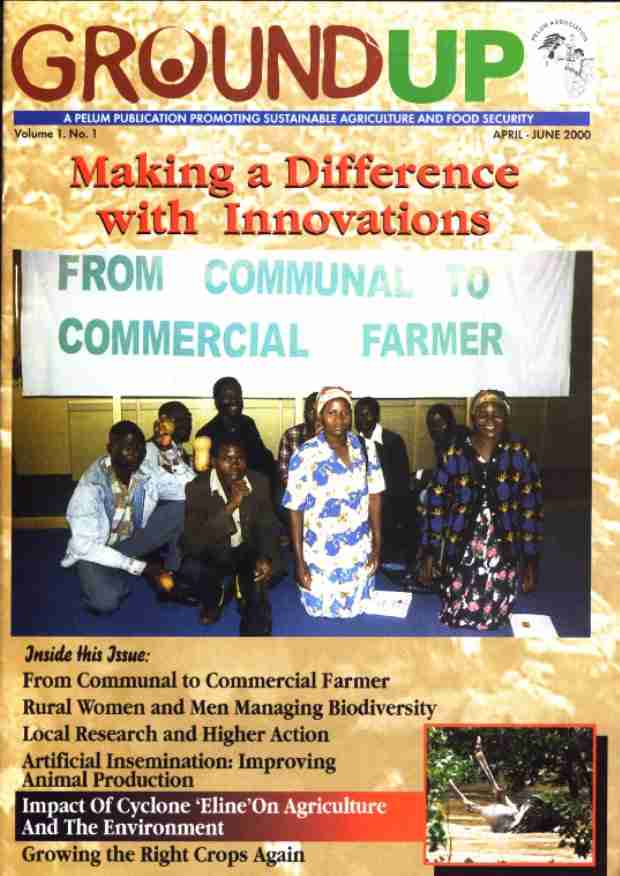
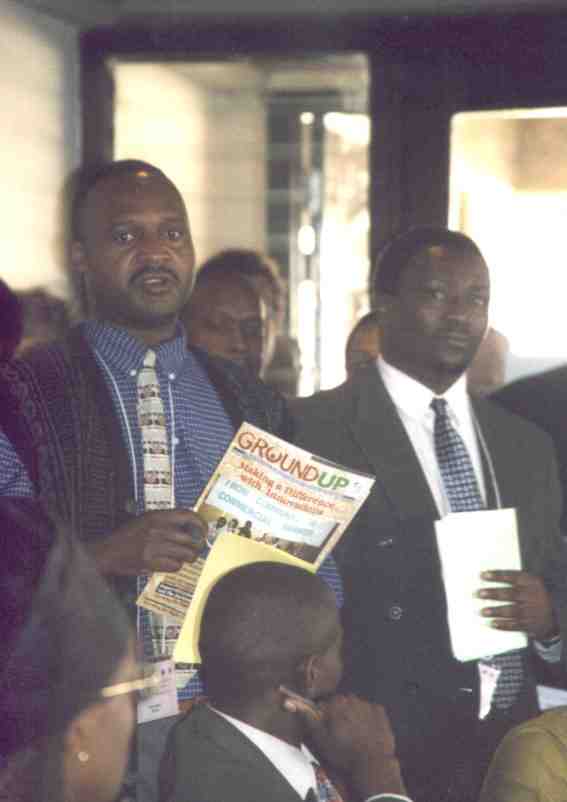
PELUM Executive launches New Journal, accompanied by Ngugi Mutura,
SACDEP Manager and PELUM Board Member
Return to
top
|

